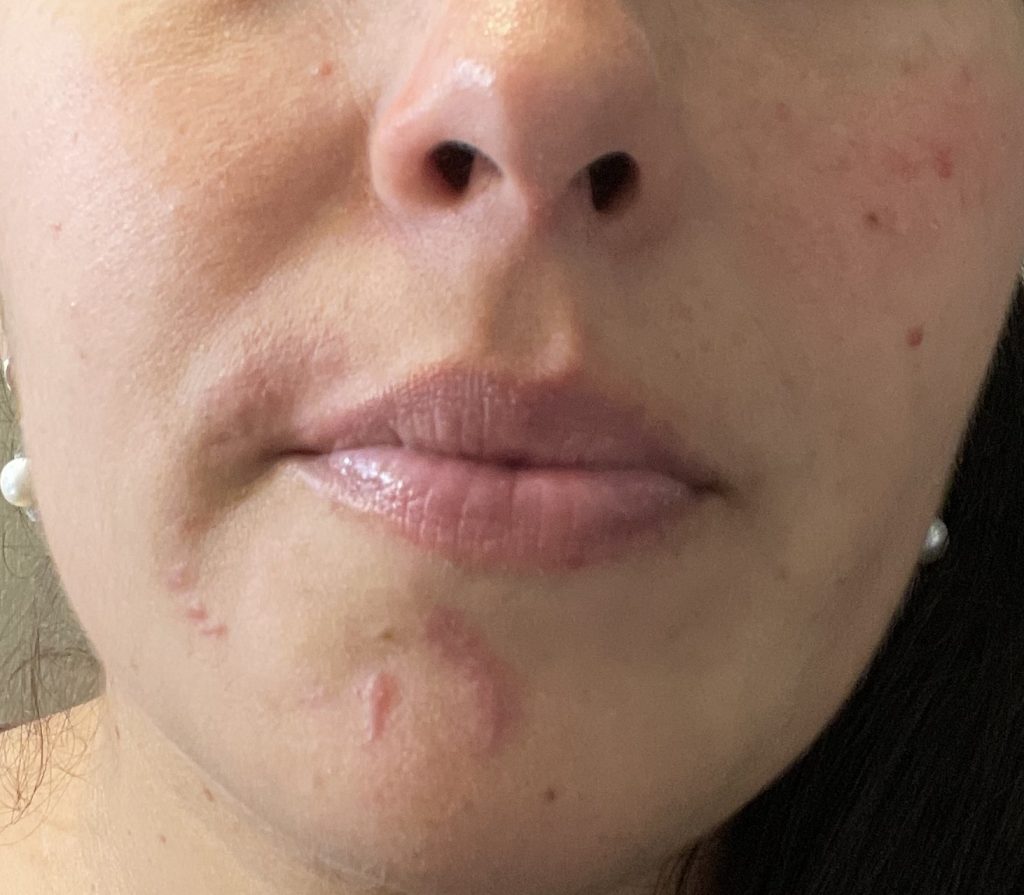Dog bite to chin
History:
A 26-year-old female with no significant past medical history presents to the emergency department after a dog bite to the lower chin approximately one hour prior to arrival. She denies any smoking or illicit drug use. Patient is concerned about cosmesis and plastic surgery is consulted for repair. Dog is up to date on vaccines including rabies. Patient is up to date on a TDAP.

Figure 1. Initial dog bite
Findings:
On exam: 3.5cm x 3mm x 5mm deep linear laceration to the lower chin extending to the mentalis muscle. Muscle is visible but not violated. Wound is hemostatic with no foreign bodies . No intra-oral injuries. No motor or sensory deficits.
Diagnosis:
Dog bite to chin
Differential Diagnoses:
None
Workup Required:
Prior vaccinations including tetanus and indications for rabies (dog was vaccinated against rabies). Foreign bodies and sensory and or motor deficits were ruled out.
Plan:
In ED washout and repair of the laceration under local anesthesia.
Expertise Needed:
Plastic Surgeon.
Treatment:
8cc of 1% lidocaine with 1:100,000 epinephrine was injected around the laceration for local anesthesia. Irrigation using approximately 250cc of saline was completed. After adequate hemostasis, two single deep buried interrupted sutures using 5-0 Monocryl were utilized in the dermis to approximate the wound edges and facilitate a tension free closure. 6.0 Proline interrupted sutures were used for the superficial closure. The patient was given one dose of IV 1.5 g ampicillin and sulbactam while in the ED and discharged with 10 days of 500mg Amoxicillin-clavulanate BID. Patient was informed to follow up in two weeks for suture removal, and to call back sooner if she developed any signs of infection. Bacitracin was applied to the wound and the patient was instructed to apply Bacitracin ointment twice daily until follow up. She was also instructed to avoid sun exposure and use SPF-30 or higher lotion if exposed to sun for the next year. This was done to decrease the chance of hyperpigmentation of her scar.

Figure 2. Immediately post- repair. Appreciate the tension free closure with non-absorbable sutures.
Follow Up:

Figure 3. One month post repair with mild erythema. Wound will continue to heal and improve for the next year. Patient instructed to gently massage scar, and continuing applying sun screen.
The patient followed up in two weeks and was found to have healing with no signs of infection and with early scarring. Patient instructed to use treatment with silicone strips for at least 3 months and (sunscreen) for at least one year. Patient content with outcome.

